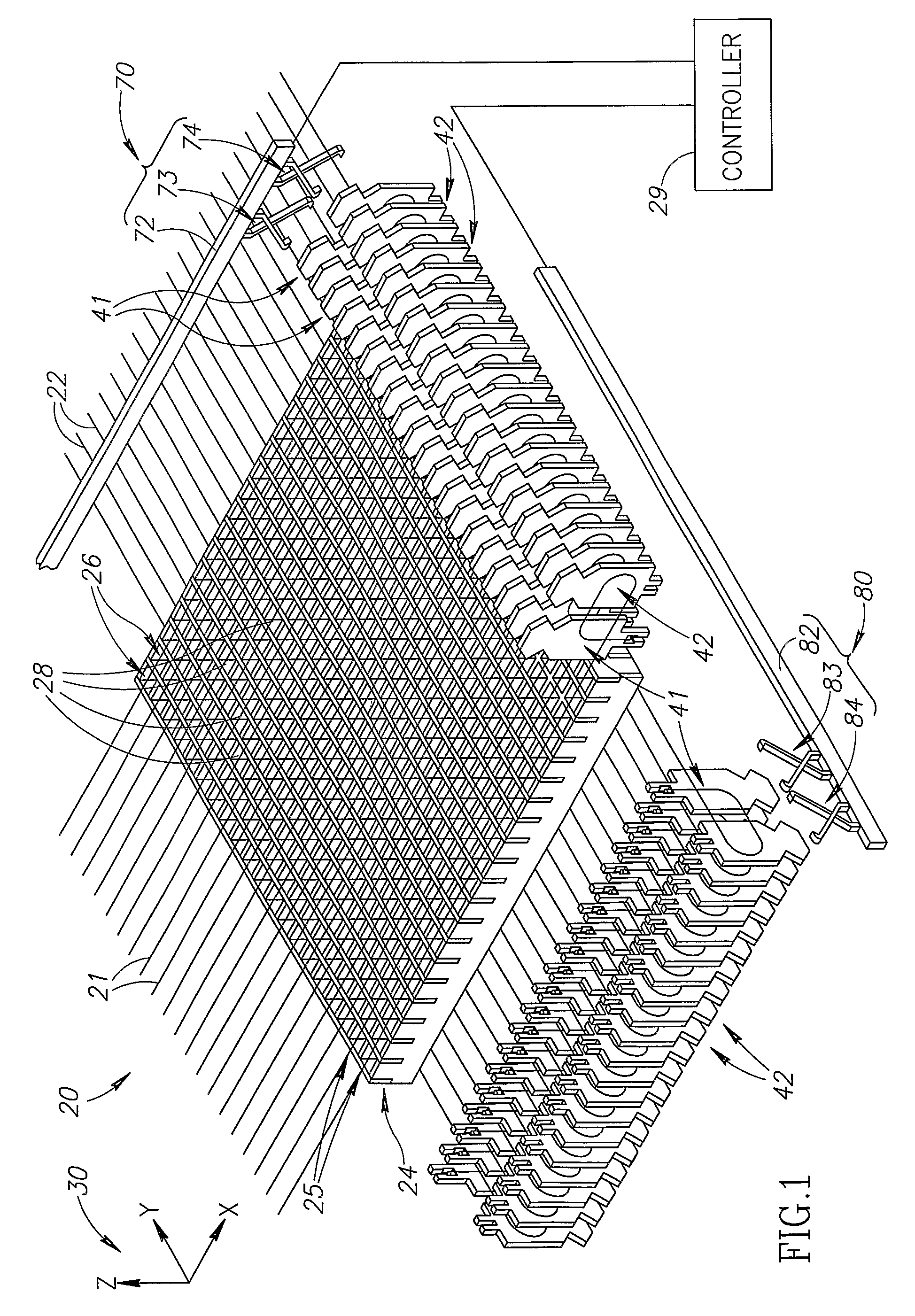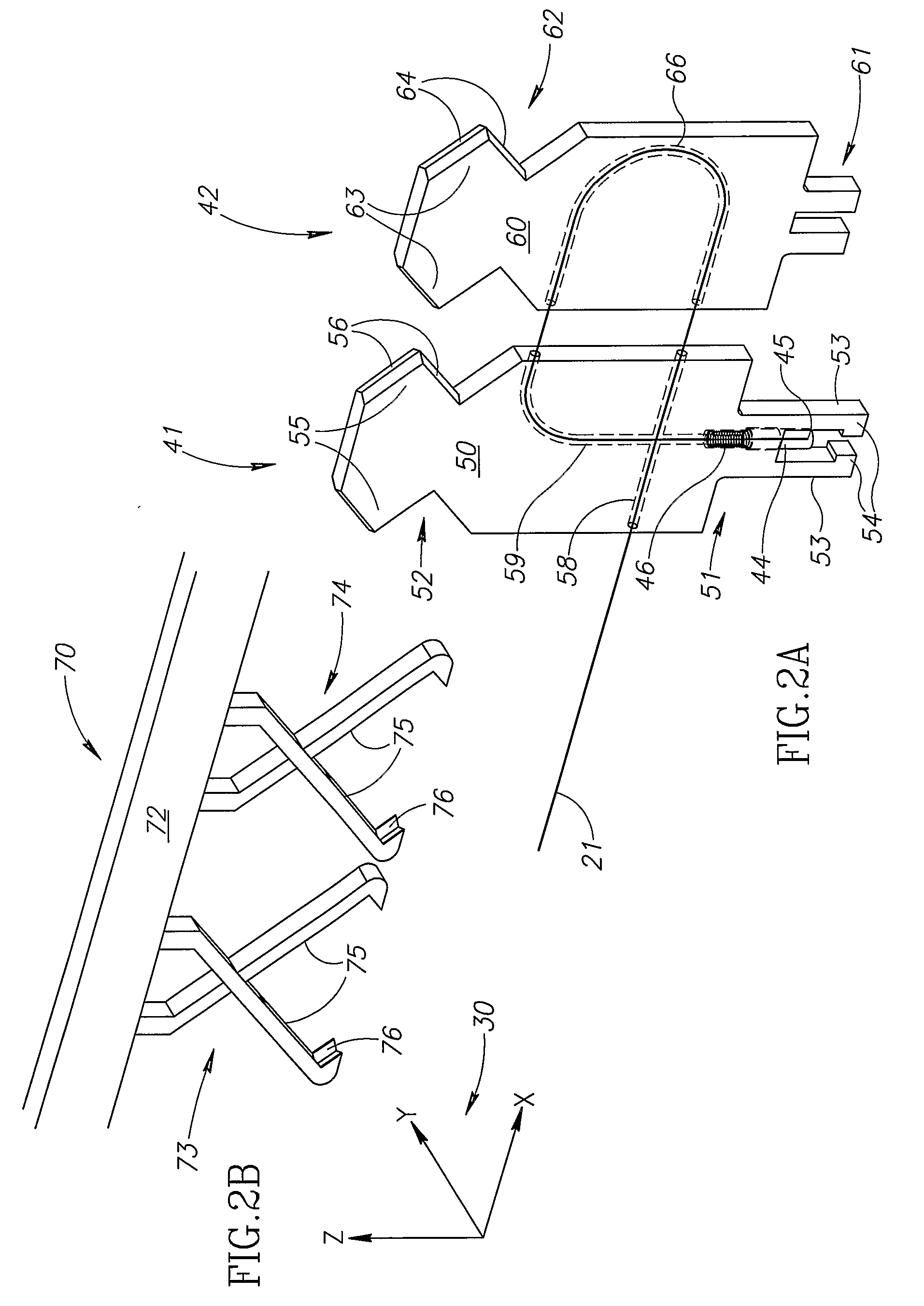Optical Crossbar Switch
a crossbar switch and optical technology, applied in the field of crossbar switches, can solve the problems of large volume of operating space, unwieldy equipment, complex task of efficiently managing the coupling and disconnection of large numbers of optic fiber ends without fibers becoming entangled in prior art crossbar switches, etc., and achieve the effect of small volume of space and efficient coupling managemen
- Summary
- Abstract
- Description
- Claims
- Application Information
AI Technical Summary
Benefits of technology
Problems solved by technology
Method used
Image
Examples
Embodiment Construction
OF EMBODIMENTS
[0063]FIG. 1 schematically shows an optical crossbar switch 20, in accordance with an embodiment of the present invention. Crossbar switch 20 comprises a first plurality of optic fibers 21, hereinafter referred to as “top optic fibers”21, and a second plurality of optic fibers 22, hereinafter referred to as “bottom optic fibers”22. Optionally, within switch 20, top fibers 21 are coplanar and perpendicular to bottom fibers 22, which are optionally coplanar. Each optic fiber 21 and 22 is mounted to a fiber-end carriage 41 and a slack-control carriage 42, and is shown in FIG. 1 without obstruction by appurtenances that might be used to couple the fiber to the carriages in order to more clearly illustrate how the fiber is spatially configured, in accordance with an embodiment of the invention.
[0064]Optionally, crossbar switch 20 comprises a rectangular honeycomb array 24 of columns 25 and rows 26 of sockets 28 located between the plane of top fibers 21 and the plane of bot...
PUM
| Property | Measurement | Unit |
|---|---|---|
| radius | aaaaa | aaaaa |
| radius | aaaaa | aaaaa |
| radii | aaaaa | aaaaa |
Abstract
Description
Claims
Application Information
 Login to View More
Login to View More - R&D
- Intellectual Property
- Life Sciences
- Materials
- Tech Scout
- Unparalleled Data Quality
- Higher Quality Content
- 60% Fewer Hallucinations
Browse by: Latest US Patents, China's latest patents, Technical Efficacy Thesaurus, Application Domain, Technology Topic, Popular Technical Reports.
© 2025 PatSnap. All rights reserved.Legal|Privacy policy|Modern Slavery Act Transparency Statement|Sitemap|About US| Contact US: help@patsnap.com



